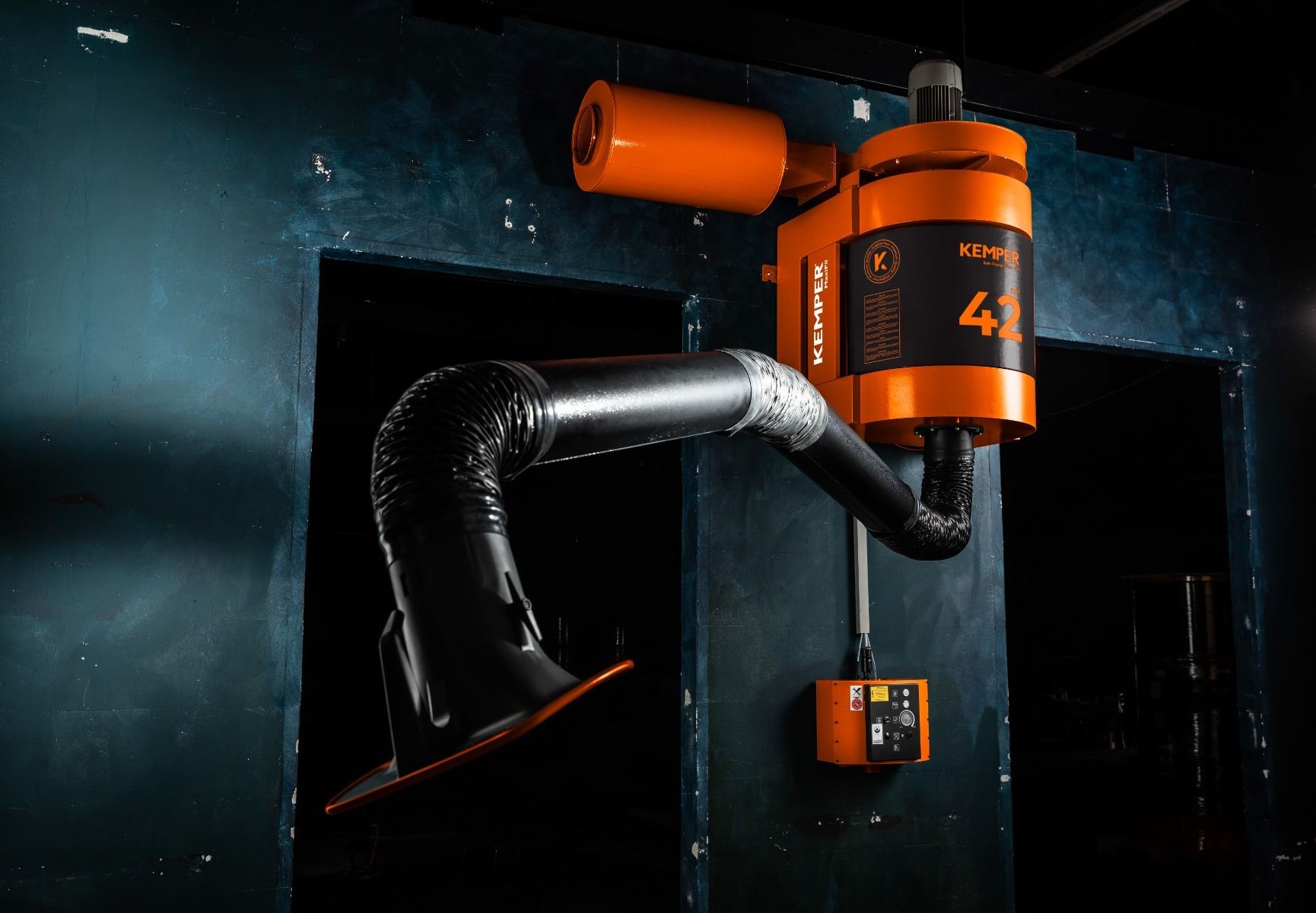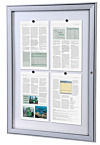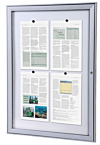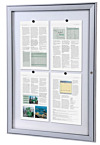
Introduction
Navigating the complex landscape of welding ventilation regulations can be challenging for businesses operating across different regions and industries. This comprehensive guide breaks down regulatory requirements by geography, industry, and welding type to help you ensure compliance and maintain a safe working environment.
Understanding and implementing the correct ventilation standards not only protects your workforce but also helps avoid costly penalties, production interruptions, and potential liability issues. This guide will serve as your roadmap to regulatory compliance, with clear explanations of requirements and practical implementation advice.
Global Regulatory Framework Overview
Welding fume regulations vary widely across different countries and regions, but most follow similar principles based on occupational exposure limits (OELs) and required control measures. Here's how the global regulatory landscape is structured:
Regulatory Hierarchy
Most countries implement a tiered approach to regulation:
- Primary Legislation: Foundational workplace safety laws
- Secondary Regulations: Specific rules implementing the primary legislation
- Guidance Documents: Detailed technical standards and recommended practices
- Industry Standards: Sector-specific practices that may be referenced in regulations
Common Regulatory Elements
While specific requirements vary, most regulatory frameworks address:
- Exposure limits for specific contaminants
- Required control measures based on risk level
- Monitoring and testing protocols
- Training and competency requirements
- Documentation and record-keeping obligations
- Medical surveillance for exposed workers
United Kingdom Regulations
Primary Legislation and Regulations
The UK has a well-established regulatory framework for controlling welding fumes:
- Health and Safety at Work etc. Act 1974: Establishes general duties for employers to ensure worker safety
- Control of Substances Hazardous to Health (COSHH) Regulations 2002: The primary regulation governing exposure to welding fumes
- HSE EH40 Workplace Exposure Limits: Sets specific limits for various welding fume components
Recent Developments
In February 2019, the HSE issued a safety alert that significantly changed the regulatory landscape for welding operations:
- All welding fume (including mild steel) is now classified as a carcinogen
- Indoor welding activities require suitable engineering controls for all welding activities
- Where engineering controls alone cannot control exposure adequately, respiratory protective equipment (RPE) must be provided
- Outdoor welding requires RPE use
- Controls must be suitably maintained, examined, and tested
- Quality and effectiveness of controls must be properly assessed and monitored
HSE Enforcement Approach
The HSE has taken a more assertive approach to enforcement following the 2019 change:
- Inspections specifically targeting welding activities
- Improvement and prohibition notices for inadequate controls
- Focus on both general ventilation and local exhaust ventilation systems
- Requirements for documented risk assessments and control plans
Welding in Confined Spaces
The UK places additional requirements on welding in confined spaces under:
- Confined Spaces Regulations 1997
- HSE Guidance INDG258 (rev1)
These regulations require additional controls including:
- Permit-to-work systems
- Gas monitoring
- Rescue arrangements
- Enhanced ventilation requirements
European Union Regulations
EU Framework
The EU framework creates consistent minimum standards across member states:
- Framework Directive 89/391/EEC: Establishes basic occupational safety principles
- Chemical Agents Directive 98/24/EC: Covers risks from chemical agents, including welding fumes
- Carcinogens and Mutagens Directive 2004/37/EC: Additional requirements for carcinogenic agents
Binding Occupational Exposure Limit Values (BOELVs)
The EU has established BOELVs for several components found in welding fumes:
|
Substance |
Limit Value (8-hour TWA) |
Short-term Limit |
|
Chromium (VI) compounds |
0.005 mg/m³ |
- |
|
Nickel compounds |
0.05 mg/m³ (inhalable) |
- |
|
Manganese |
0.2 mg/m³ (inhalable) / 0.05 mg/m³ (respirable) |
- |
|
Carbon monoxide |
23 mg/m³ |
117 mg/m³ |
|
Nitrogen dioxide |
0.96 mg/m³ |
1.91 mg/m³ |
|
Ozone |
0.2 mg/m³ |
0.6 mg/m³ |
EN Standards Relevant to Welding Ventilation
Several European standards provide technical specifications for ventilation systems:
- EN ISO 15012 (Parts 1-5): Health and safety in welding and allied processes
- EN 16798-3: Ventilation for non-residential buildings
- EN 12198: Assessment and reduction of risks generated by radiation emitted by machinery
United States Regulations
OSHA Requirements
In the United States, the Occupational Safety and Health Administration (OSHA) regulates welding fume exposure:
- General Duty Clause (Section 5(a)(1) of the OSH Act): Requires employers to provide a workplace free from recognized hazards
- 29 CFR 1910.252: Specific requirements for welding, cutting, and brazing
- 29 CFR 1910.1000: Air contaminants permissible exposure limits (PELs)
- 29 CFR 1910.134: Respiratory protection requirements
OSHA Permissible Exposure Limits (PELs)
OSHA has established PELs for various components of welding fumes:
|
Substance |
PEL (8-hour TWA) |
|
Total Welding Fumes |
No specific PEL (covered under nuisance dust or specific metals) |
|
Iron Oxide Fume |
10 mg/m³ |
|
Manganese Fume |
5 mg/m³ (ceiling) |
|
Chromium (VI) |
5 μg/m³ |
|
Nickel (soluble compounds) |
1 mg/m³ |
|
Zinc Oxide Fume |
5 mg/m³ |
NIOSH Recommended Exposure Limits (RELs)
The National Institute for Occupational Safety and Health (NIOSH) has recommended more stringent limits than OSHA:
|
Substance |
REL (8-hour TWA) |
|
Total Welding Fumes |
Lowest feasible concentration |
|
Chromium (VI) |
0.2 μg/m³ |
|
Nickel |
15 μg/m³ |
|
Manganese |
1 mg/m³ |
ACGIH Threshold Limit Values (TLVs)
The American Conference of Governmental Industrial Hygienists (ACGIH) publishes TLVs that, while not legally binding, are often referenced in best practices:
|
Substance |
TLV (8-hour TWA) |
|
Welding Fumes (NOC) |
5 mg/m³ |
|
Manganese |
0.02 mg/m³ (respirable) / 0.1 mg/m³ (inhalable) |
|
Chromium (VI) |
0.0002 mg/m³ (inhalable) |
|
Nickel (elemental) |
1.5 mg/m³ (inhalable) |
State-Specific Regulations
Some states have more stringent requirements than federal OSHA:
- California (Cal/OSHA): Generally lower PELs and additional requirements
- Minnesota: Specific standards for welding in confined spaces
- Washington: Enhanced ventilation requirements for specific welding processes
Industry-Specific Requirements
Automotive Manufacturing
The automotive industry often faces stringent requirements due to high production volumes:
- Enhanced ventilation for robotic welding cells
- Specific requirements for aluminum welding (increasingly common)
- Specialized extraction for spot welding operations
- Monitoring requirements in production environments
Shipbuilding and Repair
Shipbuilding presents unique challenges that are addressed by specific regulations:
- 29 CFR 1915: OSHA's shipyard employment standards
- Special requirements for confined space welding in vessels
- Additional controls for welding on coated or treated materials
- Enhanced ventilation standards for below-deck operations
Oil and Gas Industry
The oil and gas sector combines hazardous materials with often remote locations:
- API Recommended Practice 2009: Safe welding practices in the petroleum industry
- Special requirements for hot work in potentially explosive atmospheres
- Enhanced monitoring requirements near hydrocarbon sources
- Specific ventilation standards for tank welding and repair
Construction Industry
Construction welding has its own regulatory framework:
- 29 CFR 1926: OSHA's construction standards
- Specific requirements for structural steel welding
- Temporary ventilation systems specifications
- Requirements for multi-employer worksites
Welding Process-Specific Requirements
Different welding processes generate different fume profiles and thus have varying regulatory requirements.
Shielded Metal Arc Welding (SMAW/Stick Welding)
Due to its higher fume generation rate:
- Often requires more robust local exhaust ventilation
- Higher air flow rates typically specified
- Special attention to electrode type and composition
- More frequent exposure monitoring commonly required
Gas Metal Arc Welding (GMAW/MIG Welding)
Requirements often focus on:
- Shielding gas composition and flow rate specifications
- Differences between short-circuit, spray, and pulsed transfer modes
- Special attention to aluminum and stainless steel applications
- Position-specific ventilation requirements
Flux-Cored Arc Welding (FCAW)
Due to high fume generation:
- Typically requires the highest ventilation rates
- Special attention to inner shield vs. dual shield processes
- Enhanced respiratory protection often required
- More stringent monitoring protocols
Gas Tungsten Arc Welding (GTAW/TIG Welding)
While generating less fume, specific concerns include:
- Ozone generation, particularly with aluminum
- UV radiation protection requirements
- Special ventilation for confined space TIG operations
- Thoriated tungsten electrode handling precautions
Plasma Arc Welding and Cutting
These high-energy processes have unique requirements:
- Enhanced ventilation rates for cutting operations
- Special attention to high-temperature metal vapours
- Additional controls for nitrogen oxides and ozone
- Water table specifications for cutting applications
Compliance Implementation Strategies
Risk Assessment Process
A systematic risk assessment should:
- Identify all welding processes and materials used
- Determine potential exposure levels through monitoring
- Evaluate risks against applicable regulatory standards
- Implement appropriate control measures
- Review effectiveness and adapt as needed
Ventilation System Selection
When selecting a ventilation system to meet regulatory requirements, consider:
- Capture Efficiency: How effectively the system captures fumes at source
- Air Flow Capacity: Sufficient for the specific welding process and materials
- Filtration Capability: Appropriate for the contaminants generated
- Flexibility: Adaptability to different welding configurations
- Maintenance Requirements: Ongoing compliance considerations
Kemper's range of ventilation solutions are designed to meet regulatory requirements across different regions and applications, providing both compliance and operational efficiency.
Monitoring and Testing Requirements
To maintain regulatory compliance:
- Initial Assessment: Baseline exposure monitoring for all welding operations
- Periodic Testing: Regular air sampling to verify control effectiveness
- System Testing: Performance verification of ventilation systems
- Personal Monitoring: Worker exposure measurements
- Documentation: Proper record-keeping of all testing results
Training and Competency
Most regulations require:
- Training on hazards and control measures
- Specific instruction on ventilation system use and maintenance
- Documentation of training completion
- Regular refresher training
- Competency assessment for system operators
Special Considerations
Confined Space Welding
Confined space welding carries additional regulatory requirements:
- Higher ventilation rates typically specified
- Continuous atmospheric monitoring often mandated
- Respiratory protection usually required regardless of ventilation
- Standby personnel and rescue procedures
- Special permits and documentation
Welding on Coated or Treated Materials
Special regulations apply to:
- Galvanized or zinc-coated materials
- Painted surfaces (especially those with lead or chromates)
- Materials with solvent residues
- Degreased surfaces that may release chlorinated compounds
Multiple Welder Environments
When multiple welders work in proximity:
- Increased total ventilation requirements
- Potential for cross-exposure must be addressed
- More complex monitoring protocols required
- Enhanced general ventilation specifications
- Zoning and scheduling considerations
Conclusion
Navigating welding ventilation regulations requires understanding both the letter of the law and its practical application in your specific context. By implementing appropriate ventilation solutions that meet or exceed regulatory requirements, you not only ensure compliance but also protect worker health and enhance productivity.
For expert assistance in selecting ventilation systems that ensure regulatory compliance while meeting your operational needs, contact our team of Kemper specialists at sales@hall-fast.com or explore Kemper's complete range of solutions.
This guide is intended for informational purposes only and should not be considered legal advice. Regulations change frequently, and we recommend consulting with regulatory specialists for your specific situation.












